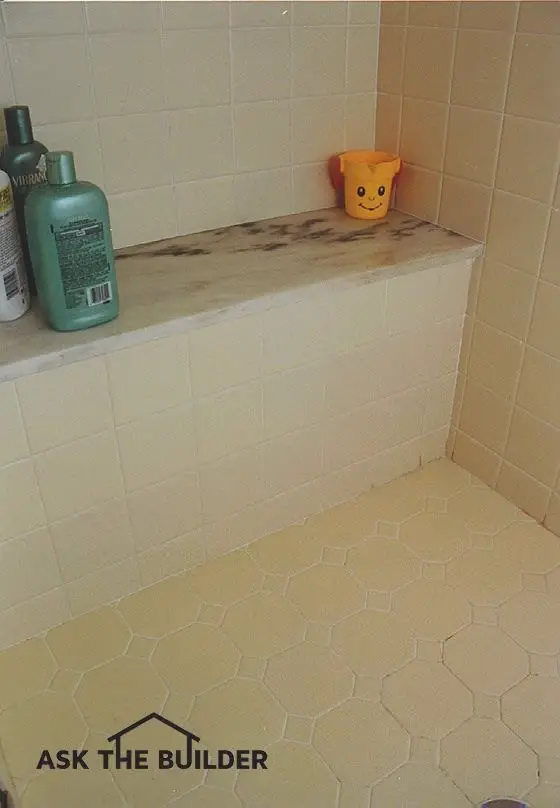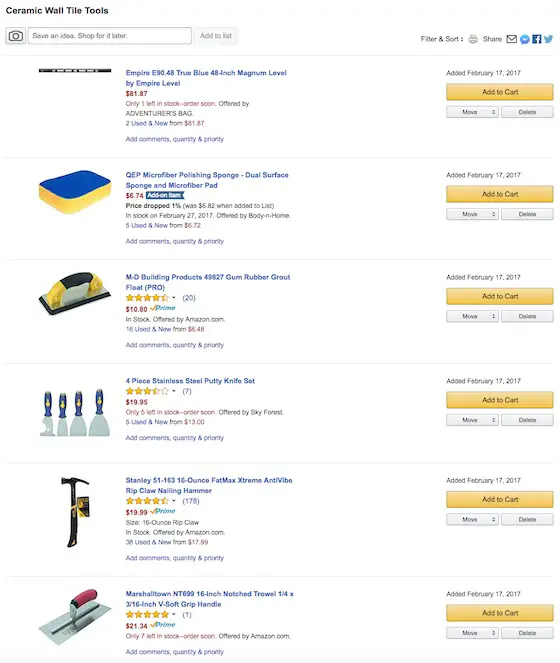Cement board products are simply wonderful. They are such a simple idea when you stop and think about it. What's more, because of its thickness, you can easily attach these products to wood framing with rust resistant roofing nails or galvanized screws. You don't need fancy drills, anchors and such to work with cement board!
Installing the Cement Board
Probably the hardest part of installing cement board is carrying it from the truck to the room where you will use it. It is somewhat heavy. It is also an abrasive material. If you have good flooring in the vicinity of your workplace you will need to tarp them or cover them well with two layers of red rosin paper. Little pieces of sand and cement paste fall off the edges of the cement board creating a scratch hazard.
Cutting the Backer Board
There are two ways to cut cement board. You can score it with a carbide tipped tool and then snap it like drywall. This always leaves a fairly ragged edge.
If you want a clean edge, you will have to saw it like a piece of plywood. Sawing creates massive quantities of cement dust. You will have to do all sawing outside and use an old circular saw equipped with a masonry blade. Never use a new or good saw. The concrete dust will enter the electrical workings of the saw and ruin them in no time flat. I also urge that you use an approved NIOSH/OSHA dust mask!
Holes for faucets and pipes can be made with a cold chisel. If you score both sides of the material where you intend the hole to be you can end up with a fairly clean hole. Use moderate hammer strokes when hitting the chisel. You can always increase the pounding force if necessary.
Nailing/Screwing The Board
Before you install cement board, it is really important to make sure that the framing lumber is dry. New construction lumber can become saturated if the roof is not put on quickly. The framing lumber can actually have a high moisture content on its own. You need to let the lumber dry out before you cover it with cement board and vapor barriers. If you don't do this, you can trap moisture in the wall cavity. Remodel jobs usually do not have this problem, especially if you are putting cement board on old framing lumber.
Most cement board manufacturers will permit you to use nails or screws to attach the material to framing. If you decide to use screws, make sure you keep the screw heads flush with the cement board surface. If not, they may cause a tile to seat unevenly.
You will find that it is very hard to nail close to the edge of cement boards. As such, try to keep corner studs 3/4 inch out from the corners. If you install them tightly, you will have problems attaching the second sheet into a corner, trust me.
Nail or screw fastenings should be every eight inches on center. Most installers fail to follow this important step. Usually I see nails on 12 inch centers or more!
How High Should it Be?
Ceramic tile is often installed to a height of six feet off the finished floor in many bathrooms. Often the cement board is installed just three feet up from the surface of the tub or shower. I suggest that you take it to within four inches of where the tile will end on all top edges. It should extend to within one inch of all vertical edges of the ceramic tile.
Seams
The manufacturers of the cement boards really want you to tape the joints in similar fashion to taping drywall. You have to use thinset compounds and special fiberglass tape. Standard joint compound and paper tape will not do behind ceramic tile! It will rot and fail. Remember, premixed joint compounds sold in those five gallon buckets are nothing more than water soluble glue and dust. Why do you think they dissolve so easily when wet?
If you do tape the joints as recommended, you may have to really take your time and feather the edges with additional thinset. I'll never forget the first time I did it! As hard as I tried, I ended up with a hump in the wall. Like an idiot, I installed the tile without dealing with the hump. I thought the tile adhesive would smooth it out. Wrong!
Installation Literature
Every manufacturer has great installation literature. I URGE you to ask for it when you purchase the product. Odds are they will not have it handy. I have often found that to be the case in supply houses I deal with.
Most manufacturers will gladly send the installation literature to you. USG happens to have a very comprehensive brochure with excellent illustrations. I believe the James Hardie company has one as well!
Column B199


